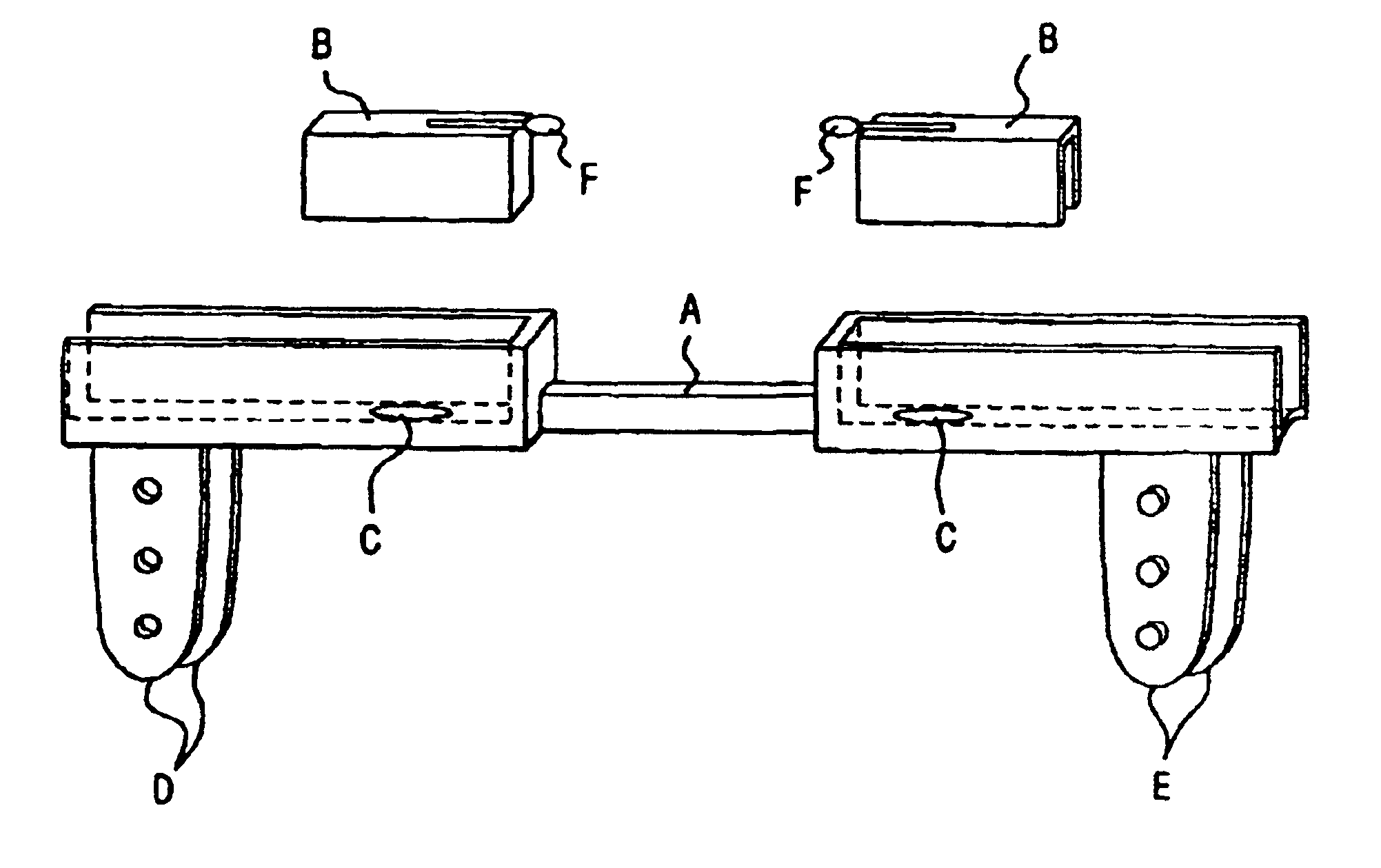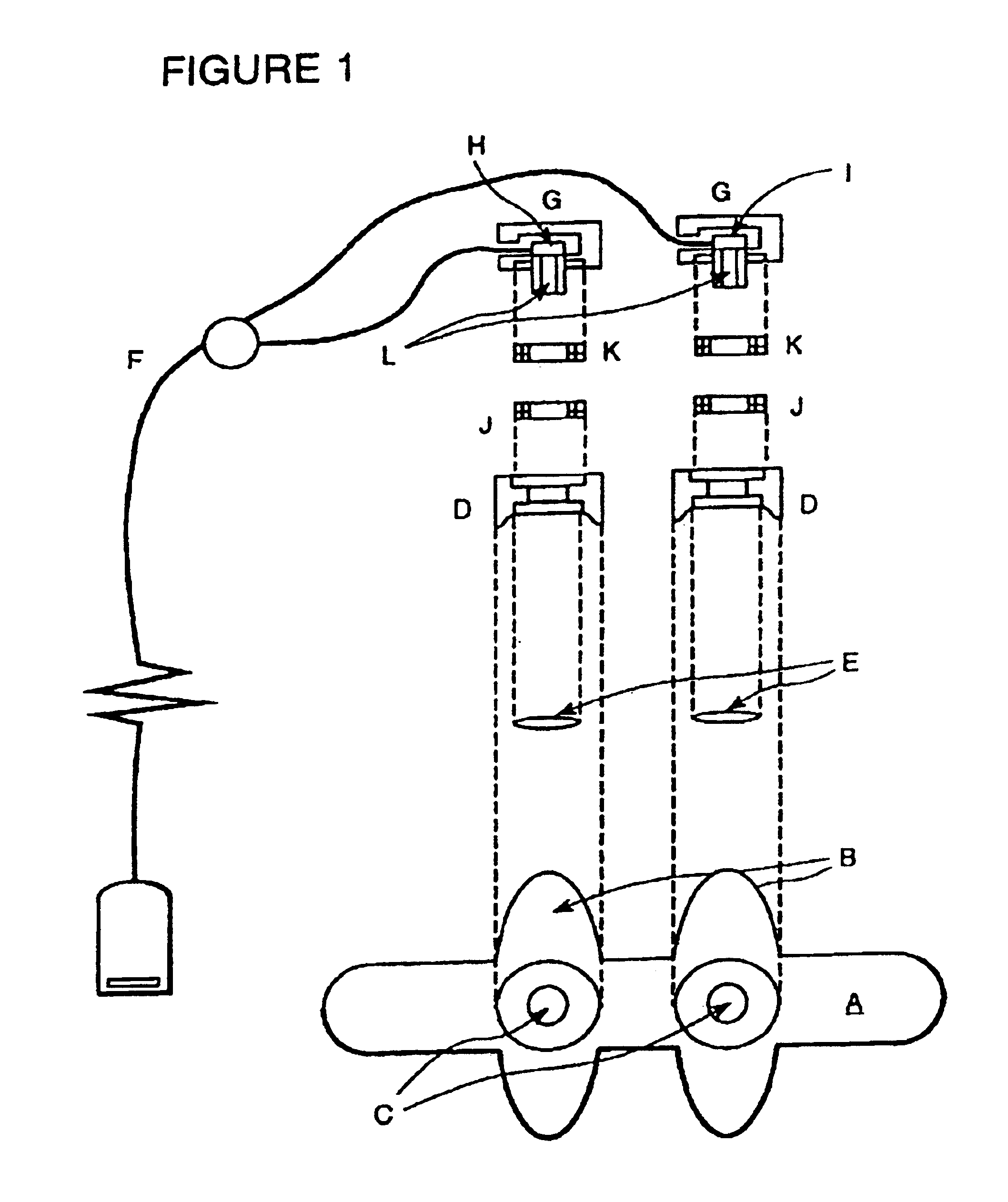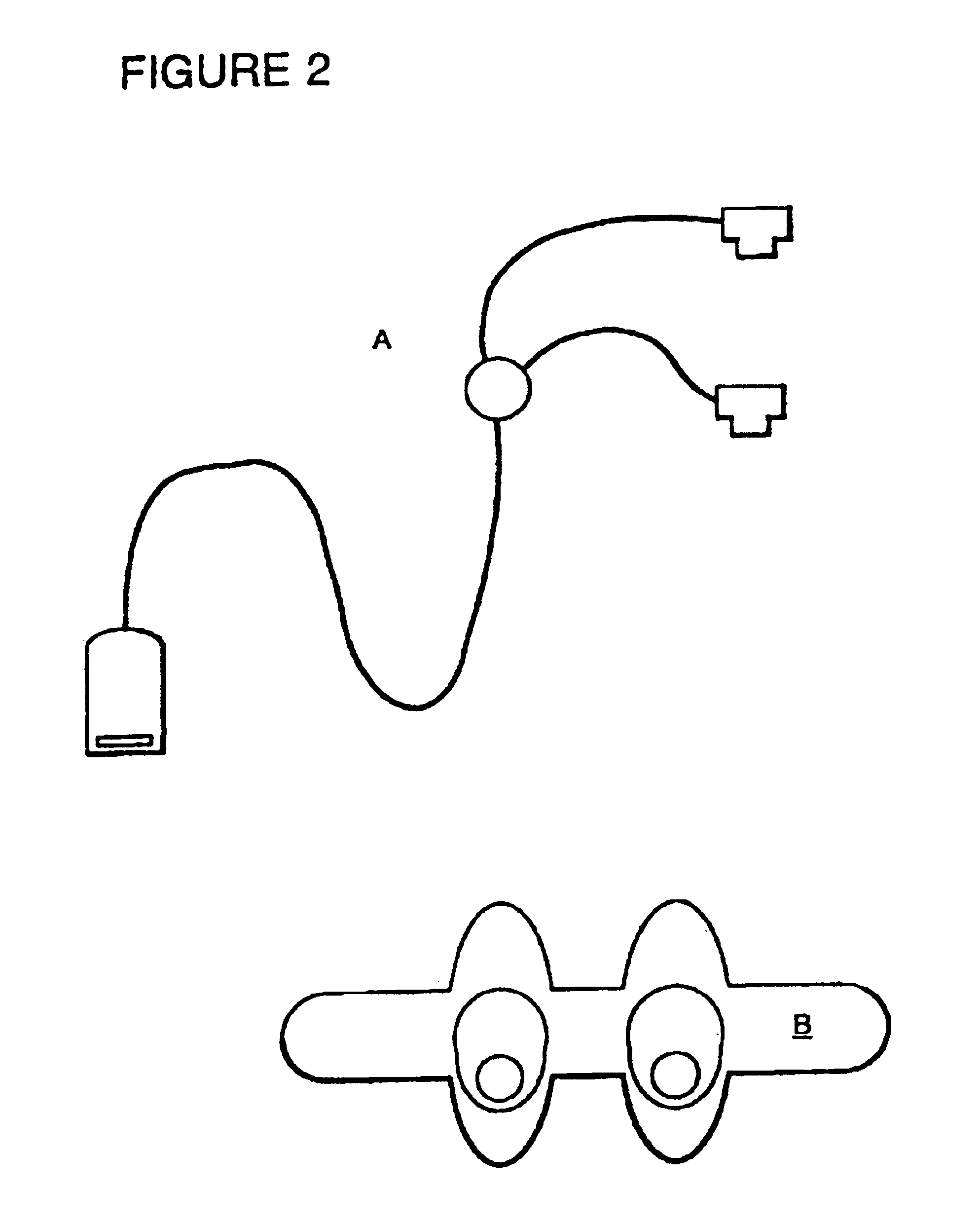Universal modular pulse oximeter probe for use with reusable and disposable patient attachment devices
a technology of a patient attachment device and a pulse oximeter, which is applied in the field of universal modular pulse oximeter probes for use with reusable and disposable patient attachment devices, can solve the problems of reducing the service life of the patient, affecting the operation of the patient, so as to improve the fit and function of the finger clip, reduce the risk of bacterial infection, and reduce the risk of infection
- Summary
- Abstract
- Description
- Claims
- Application Information
AI Technical Summary
Benefits of technology
Problems solved by technology
Method used
Image
Examples
Embodiment Construction
Reusable Pulse Oximeter Probe and Disposable Bandage Apparatuses and Methods
[0061]Description of a Reusable Pulse Oximeter Sensor
[0062]The reusable pulse oximeter sensor constitutes a “Y” style pulse oximeter probe shown in FIG. 1, Item F. The probe incorporates two plastic housings shown as FIG. 1, Items G. The housings contain apertures or radiation transparent windows L therein. One housing contains the light-emitting diode of the probe, FIG. 1, Item H, and other contains the photocell detector, FIG. 1, Item I. The emitter and detectors are aligned with the apertures or windows L of the housings in order to transmit and receive light through a human appendage.
[0063]Seated within a recessed area of each housing, and attached permanently thereto, is a “mushroom hook” adhesive-backed pad, FIG. 1, Item K. The purpose of these pads is to selectively engage the “mushroom hook” pads, FIG. 1, Items J, attached permanently to the plastic discs, FIG. 1, Items D, and to attach the r...
PUM
 Login to View More
Login to View More Abstract
Description
Claims
Application Information
 Login to View More
Login to View More - R&D
- Intellectual Property
- Life Sciences
- Materials
- Tech Scout
- Unparalleled Data Quality
- Higher Quality Content
- 60% Fewer Hallucinations
Browse by: Latest US Patents, China's latest patents, Technical Efficacy Thesaurus, Application Domain, Technology Topic, Popular Technical Reports.
© 2025 PatSnap. All rights reserved.Legal|Privacy policy|Modern Slavery Act Transparency Statement|Sitemap|About US| Contact US: help@patsnap.com



